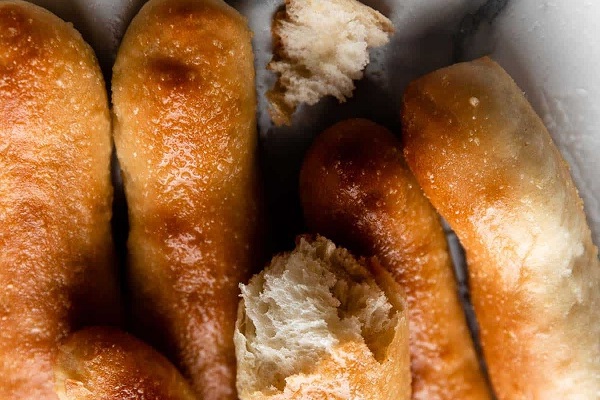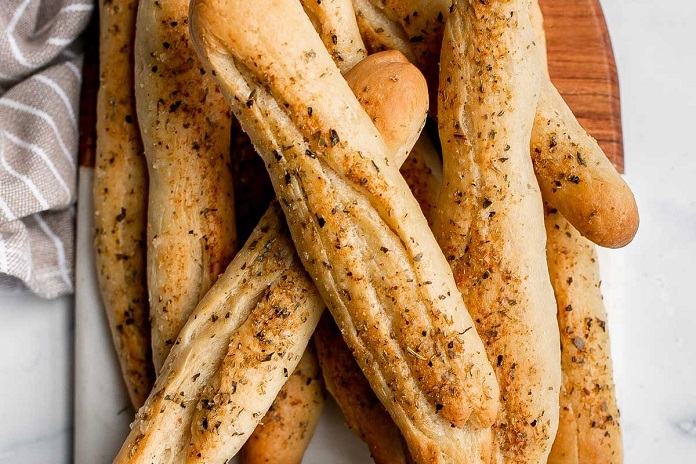On October 25 we celebrates, National Breadstick Day a day to enjoyed for their crispy, airy texture and savoury flavours. Where classic flavours include buttery, garlic, and parmesan, but they can also feature herbs like rosemary or seasoning blends. For the extra attractive taste you can choice of dipping sauces, such as marinara or cheese, adds an extra layer of flavour to this versatile treat.
Table of Contents
ToggleHistory of National Breadstick Day
Also, did you know that the original breadsticks, known as grissini, which was originated in the Piedmont region of Italy in the late 1600s.
The history of the national breadsticks stories goes like this, a Young person named as Vittorio Amedeo II di Savoia, turned nine. Where he had already suffered from intestinal disorders that affected his ability to eat as well as his physical development.
His mother asked the court physician to find a remedy to feed her son. Therefore, the physician, who had great intellect, pinned the blame on food poisoning from bread polluted by pathogenic intestine germs. Where, the doctor himself had suffered from similar intestine disorders. His remedy at the time? His mother’s homemade bread, “well leavened, well baked with little crumb and very crisp.”
After that, the doctor asked a local baker to reproduce the bread sticks for the duke which it worked. After that Vittorio recovered and eventually became a king and the crisp grissino became the preferred bread in the Savoia household.
Since then, Just four years after Duke Vittorio ate his first breadstick, heavy demand for the product made it necessary for officials to set a ceiling price.
| 1643 (The breadsticks creation story: Version 1) | A Florentine abbot originally described grissini as “long-shaped, bone thin” bread made in a town outside of Turin. |
| 1675 (The breadsticks creation story: Version 2) | They were created as an intestinal disorder remedy that encouraged the appetite of the nine-year-old duke, Vittorio Amedeo II de Savoia, House of Savoy — eventually saving his life. |
| 2014 (All you can eat? Not anymore) | Following a corporate merger with Olive Garden, Starboard Value shocked the business world by eliminating the famous all-the-breadsticks-you-can-eat policy — believing that hungrier customers would buy more entrees. It worked. Olive Garden stock skyrocketed by 47%. |

Recipe – Breadstick
Ingredients:
- 2 1/4 teaspoons (1 packet) active dry yeast
- 1 1/2 cups warm water (110°F or 45°C)
- 3 1/2 cups all-purpose flour
- 1 teaspoon salt
- 2 tablespoons olive oil
- 1/4 cup grated Parmesan cheese (optional)
- 2 tablespoons melted butter (for brushing)
- 1 teaspoon garlic powder (optional)
- 1 teaspoon dried Italian herbs (optional)
How to make:
- In a small bowl, dissolve the yeast in warm water. Let it sit for about 5 minutes until frothy.
- In a large mixing bowl, combine the flour and salt.
- Make a well in the center and add the yeast mixture and olive oil.
- Stir until the dough starts to come together, then knead on a floured surface for about 5-7 minutes until smooth and elastic.
- Place the dough in a lightly oiled bowl, cover with a damp cloth or plastic wrap, and let it rise in a warm place for about 1 hour or until doubled in size.
- Punch down the dough and transfer it to a floured surface.
- Roll out the dough into a rectangle about 1/2 inch thick.
- Cut the dough into strips (about 1/2 inch wide) and place them on a baking sheet lined with parchment paper.
- Preheat your oven to 400°F (200°C).
- Brush the breadsticks with melted butter.
- If desired, sprinkle with Parmesan cheese, garlic powder, and dried herbs.
- Bake for 12-15 minutes or until golden brown.
- Let the breadsticks cool slightly before serving. They’re perfect with marinara sauce, cheese dip, or just on their own.
4 Reasons of Breadsticks
-
They’re Italian- There are several versions of how breadsticks were created, the only thing everybody agrees on is that they are made of bread, enjoy an Italian heritage, and taste good.
- Napoleon loved ’em- Napoleon installed a stagecoach service between Torino and Paris primarily as a way to escort breadsticks to the emperor, who called them “little sticks of Turin.”
- We want them crispy — not burnt- The main directive to 14th century bakers was to bake crispy breadsticks without burning them.
-
They’re even in Spain- Spanish breadsticks, known as Rosquilletas, are primarily served mostly in the Castello de la Plana region.
Conclusion
In conclusion, National Breadstick Day usally falls on October 25 is a delightful opportunity to enjoy one of the most beloved and versatile treats. Whether you’re indulging in classic buttery breadsticks or experimenting with different flavors and dipping sauces, it’s a perfect day to appreciate the simple pleasures of good food.
Homemade breadsticks are easy to make and offer a satisfying experience that can be shared with family and friends.
